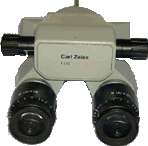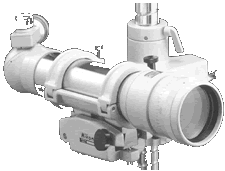
|
"MD Biomedics has complete alignment capabilities..."
"MD Biomedics Regularly adjusts Zeiss, Leica and Moeller Optics..."
MD
BIOMEDICS, INC. |
Why do I get Double Vision in my Microscope? One of the most common things that can go wrong with a surgical microscope is eyepiece, or binocular, alignment. Ask any surgeon who has ever had to look through misaligned optics for any length of time and he'll tell all about the headaches and tired eyes. Ask any of the staff that works with a docs working with misaligned optics, and they'll tell you what a real pain it can be. It's amazing that such a simple problem can wreak so much havoc on the lives of those involved. Most surgical microscopes are commonly configured as stereo microscopes A stereo microscope is basically two monocular type microscopes combined at the objective lens. A simple analogy for a stereo microscope would be a set of field binoculars with an additional magnifying glass in front of the binocular objectives. In order for a stereo microscope to function properly, both left and right optical paths must converge in the same focal plane and be coincident at the same x-y point in space. Failure to adhere to these basic requirements yields an optical system that is unusable or extremely troublesome. What causes an eyepiece to fall out of alignment? Most eyepiece failures result from physical damage resulting from dropping the unit, forcefully adjusting the oculars beyond their capability or any form of impact that causes a mechanical movement in the alignment adjustments. The realignment system varies from manufacturer to manufacturer but ultimately centers on adjusting the position of the binocular optics to optical center with regard to one another, referenced to a fixed mount. An ideal configuration for adjustment is a cross hair target mounted at a fixed distance. The binocular is mounted to a jig in front of the target and adjusted to achieve a center field in each eyepiece. Once adjusted, the eyepiece is mounted to the microscope to ensure perfect alignment to the magnification stage and objective.
A collimator can be used to align binocular eyepiece heads If your unsure if the eyepiece is causing you problems in a problematic microscope, then do the following:
MD Biomedics has complete alignment capabilities, utilizing Newport Research hardware in conjunction with multiple auto collimating devices. We regularly adjust Zeiss, Leica and Moeller optics as well as any other manufacturers. Let MD Biomedics help with any alignment issues you may have. |
|

